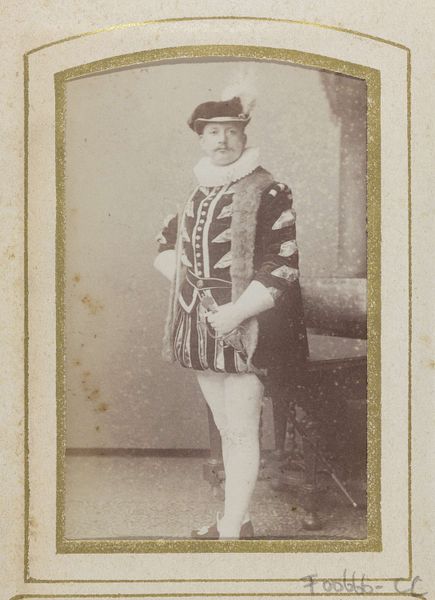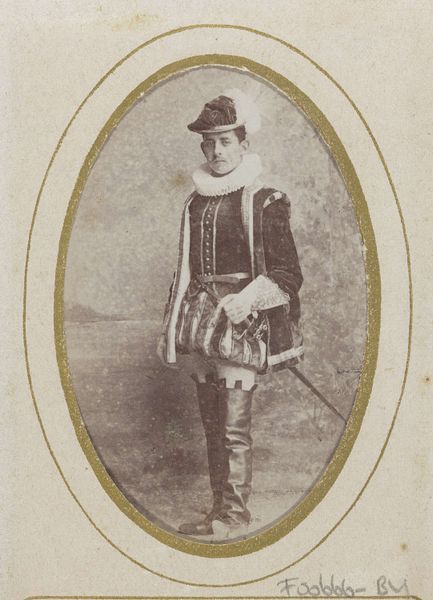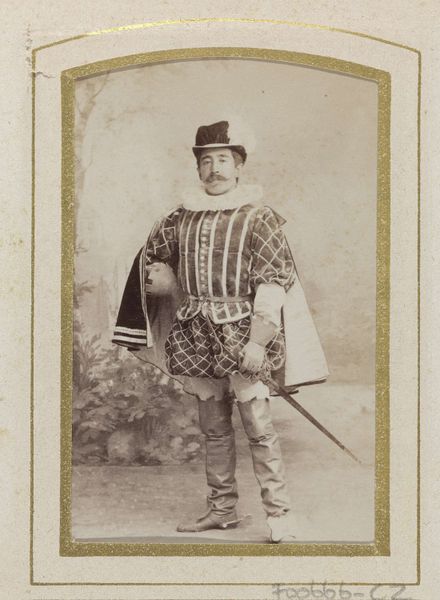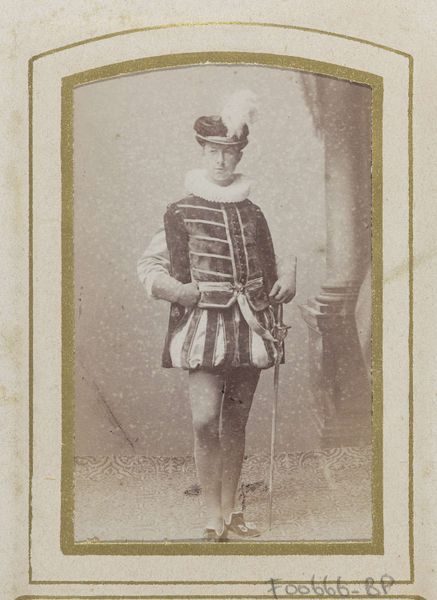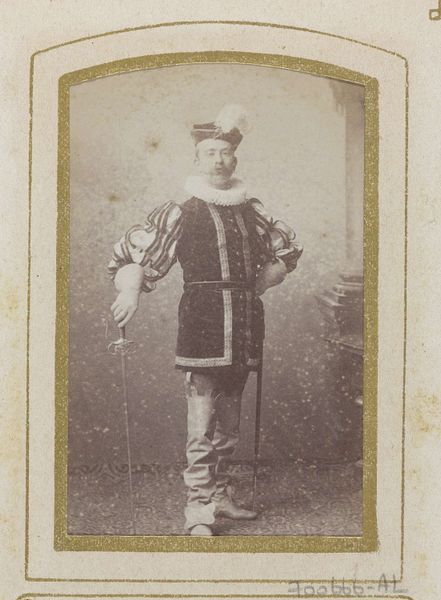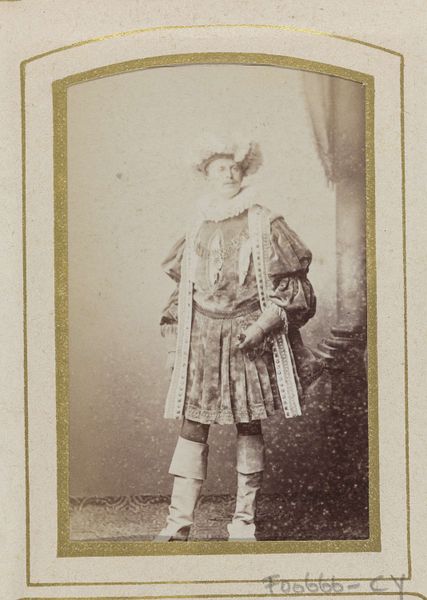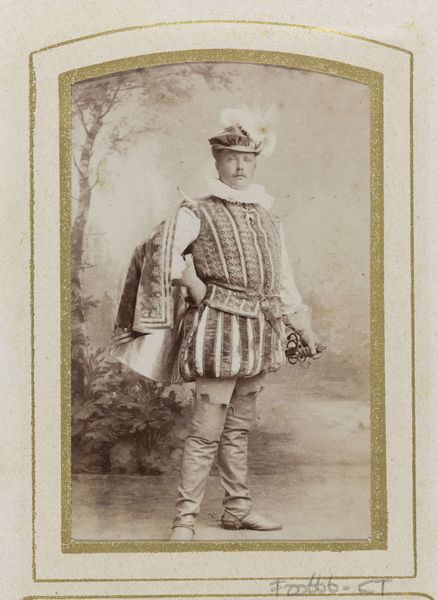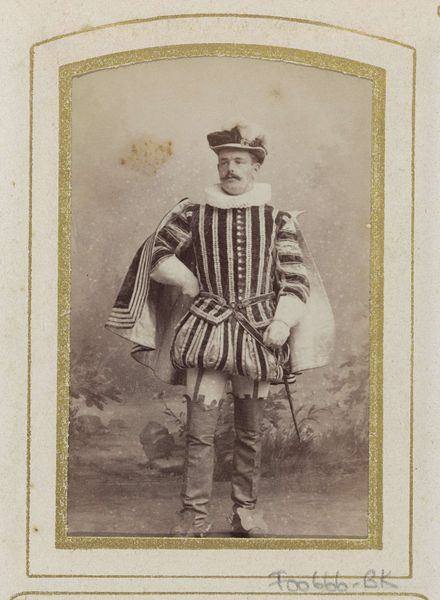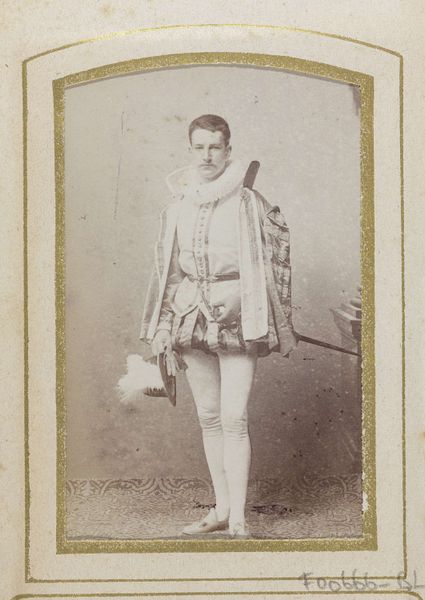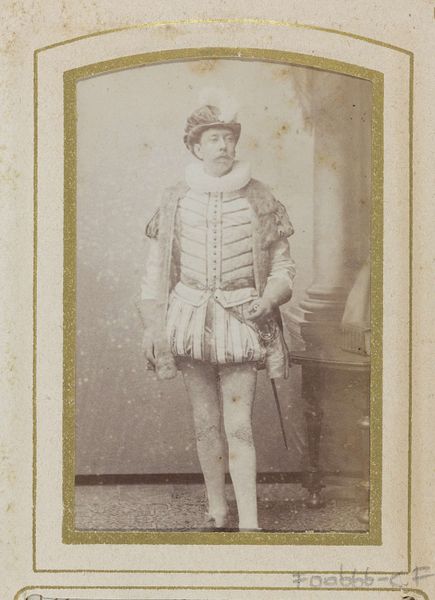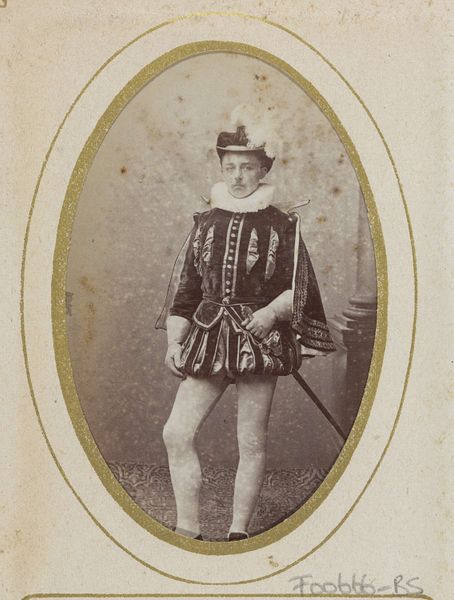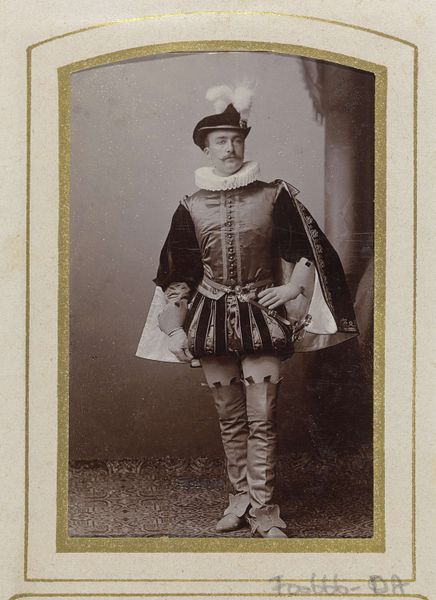
Portret van een jonge man in kostuum met degen, aangeduid als J.H. Hijmans 1860 - 1905
0:00
0:00
photography
#
portrait
#
photography
#
genre-painting
#
realism
Dimensions: height 83 mm, width 52 mm
Copyright: Rijks Museum: Open Domain
Curator: This is a photograph titled "Portret van een jonge man in kostuum met degen, aangeduid als J.H. Hijmans" created by Jan Goedeljee, dating sometime between 1860 and 1905. Editor: The sepia tones give it an otherworldly, nostalgic quality, and the details in the costume, particularly the ruff around the neck, suggest someone of status or aspiration. It feels staged and carefully considered, almost performative. Curator: Exactly. It's an interesting example of 19th-century portraiture engaging with historical costume. In the absence of color photography, staging portraits like this was a way for people to signal their connections to a certain history, real or imagined, aligning themselves with particular narratives of class or national identity. Editor: The act of “performing” identity here makes me consider questions around authenticity and self-representation. Who was J.H. Hijmans really? What statement was he trying to make by associating himself with that persona, in that historical garb? What does it mean to ‘become’ someone through dress and photography, particularly against a socio-political landscape of strict social hierarchies and emerging bourgeois values? Curator: This kind of self-conscious costuming was not uncommon among the well-to-do. The ability to commission such a portrait indicated privilege. The choice of attire and props were meticulously decided to project certain ideals. It echoes earlier traditions of history painting but democratized to the level of the aspirational middle class, eager to engage with those traditions themselves. Editor: Do you think there’s a reading of masculinity here, as well? He stands straight, his hand is resting on his sword…It is less about status and more about a type of dominant persona. The use of these types of ‘genre-paintings’ shows us more about what the artist expects and wishes for than a clear portrait of what is actually there. Curator: Undeniably! The sword is a symbol of power, masculinity, perhaps even nobility - although that could simply be part of the play-acting here. The very choice of clothing would allow the persona, the idea, the story to come out. Editor: So much is contained within this single, carefully crafted image, a dialogue between personal aspiration and collective history that still resonates today when constructing identity in the digital sphere. It's almost uncanny. Curator: Precisely! It reminds us that the performance of self is never truly detached from the stage on which it is presented.
Comments
No comments
Be the first to comment and join the conversation on the ultimate creative platform.
